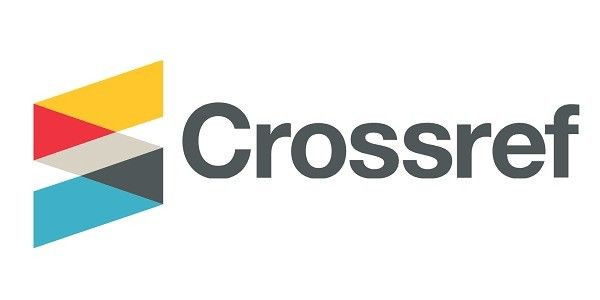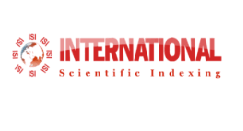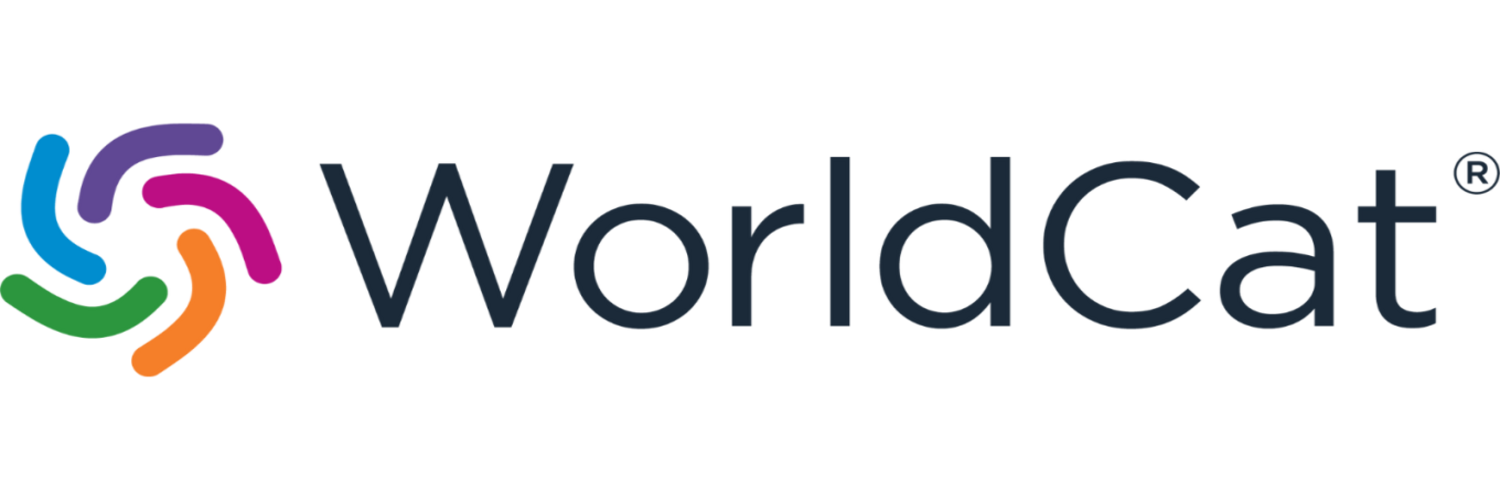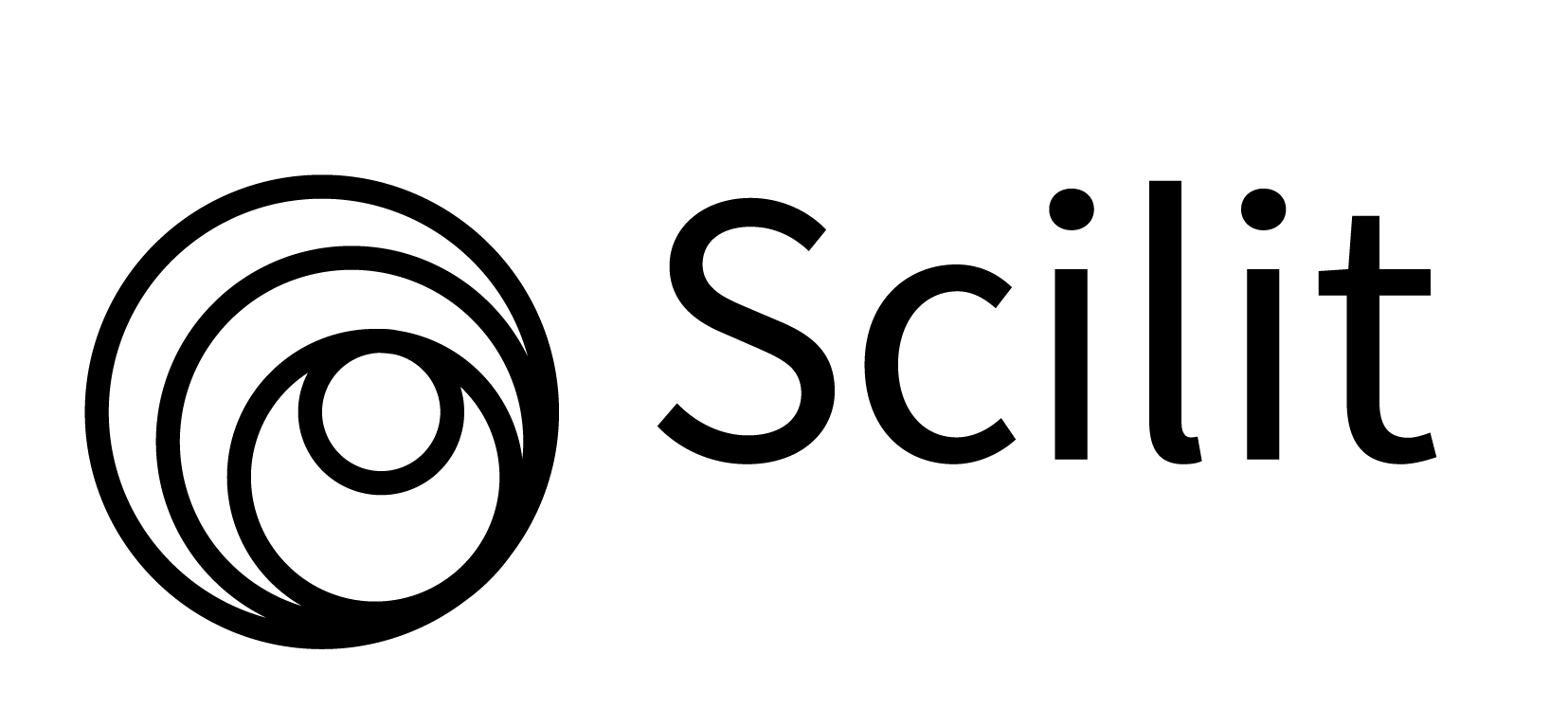Research Article
European Online Search Patterns of Flu Vaccination During the Covid-19 Pandemic
- Dr. Inês Silva Costa
Corresponding author: Dr. Inês Silva Costa
Volume: 1
Issue: 3
Article Information
Article Type : Research Article
Citation : Inês Silva Costa, Madalena Meira Nisa, Lígia M. Ferreira. European Online Search Patterns of Flu Vaccination During the Covid-19 Pandemic. Journal of Medical and Clinical Case Reports 1(3). https://doi.org/10.61615/JMCCR/2024/MAY027140520
Copyright: © 2024 Inês Silva Costa. This is an open-access article distributed under the terms of the Creative Commons Attribution License, which permits unrestricted use, distribution, and reproduction in any medium, provided the original author and source are credited.
DOI: https://doi.org/10.61615/JMCCR/2024/MAY027140520
Publication History
Received Date
20 Apr ,2024
Accepted Date
13 May ,2024
Published Date
20 May ,2024
NONE
►European Online Search Patterns of Flu Vaccination During the Covid-19 Pandemic
Inês Silva Costa1*, Madalena Meira Nisa1, Lígia M. Ferreira1
1Pediatrics Department, Centro Hospitalar Tondela-Viseu.
Abstract
Introduction: Google Trends is a data tool that measures the volume of online searches and has been proven to be associated with changes in the search for medical care. This study aims to identify a possible increase in searches about flu vaccination during COVID-19.
Methods: We performed an analysis of the “flu vaccine” (2016-2020). Relative search volume (0 to 100, highest interest in the query) was studied for two groups of countries, according to the incidence rate of COVID-19 (highest: Belgium, Czech Republic, Spain, Portugal, Denmark; lowest: Poland, Sweden, Norway, Finland, Greece).
Results: Median search volume before COVID-19 varied between 0 (Czech Republic and Portugal) and 4 (Belgium and Poland) outside the flu vaccination season and between 0 (Czech Republic) and 31 (Greece) during the vaccination season.
As COVID-19 settled, the online search increased outside vaccination season in every country (p<0.05), except in the Czech Republic (p=0.22). During vaccination season, the search also increased in every country (p<0.05) except Finland (p=0.21).
As to the percentage of increase in search during vaccination season during COVID-19, the top 5 countries were: Czech Republic (5200%), Spain (484,6%), Poland (400,0%), Denmark (311,8%) and Portugal (280%).
Conclusion: Flu vaccination is one of the most acknowledged public health measures and its online search peaks annually in most of the studied countries. The COVID-19 pandemic increased its search, predominantly in countries with higher incidence.
Keywords: influenza, COVID-19, metadata, health literacy.
Introduction
Google Trends (GT) is an online free-access tool provided by the Google® company that grants access to metadata about the population´s searches in online search engines worldwide.[1] The extracted data allows us to study people´s search behavior through information about how often a determined concept is searched in a defined period and a determined geographical location. All topics can be analyzed, including flu-related interest in vaccination and epidemiology [1,2]. Various studies about health literacy found a link between how often a determined subject is searched online and changes in healthcare search. This happened with breast cancer, as increased online searches reflected in more people seeking screening tools. On the other hand, this also happened during the COVID-19 pandemic as more people searched for conditions with similar symptoms to the disease caused by the SARS-CoV-2 virus. [1,3,4] This may be a potential method to study the efficacy of health campaigns, their impact on the search for clinical resources, but also the impact of pandemics or public health interventions, and how they are influenced by the geographical location of searchers.
Flu is a respiratory infection with a very particular seasonal pattern. There are groups of patients more vulnerable to morbimortality caused by influenza, including children, the elderly, and patients with chronic conditions. Children pose an antagonistic scenario as reported incidences of short and long-term morbidity were higher in flu infection compared to COVID-19, which was described as mostly a mild disease in this age group. [5] Since flu vaccination campaigns happen to be held yearly in most European countries, it is of high concern to study if the COVID-19 pandemic changed people´s interest in this particular type of vaccination. This may happen primarily because the most common symptoms described with COVID-19 are similar to the ones caused by the flu. On the other hand, the fear of reaching healthcare services would pose an additional interest in protection against every disease whose incidence would usually rise in that determined period of the year. [4]
Articles on the actual rates of flu vaccination are contradictory; while some indicate that the population was more interested in vaccinating, even though a very low circulation of H1N1 was later observed, others demonstrate an actual decrease in the vaccination rate of children during the pandemic. [6,7] Studies in Italy show an increase in flu vaccination rates in children during the COVID-19 pandemic, and it was one of the countries with the highest incidence in the first months of the pandemic in Europe. [8] Even though Vaccination rates represent a good measure of how the population is interested in that specific primary prevention measure, it is yet to be studied if people did want to know about the flu vaccine afterward, decided not to do it, or were not able to do it. Although the COVID-19 pandemic reached every country in Europe, it is also important to study whether countries with higher incidences of COVID-19 in children also had different search patterns about flu vaccination compared with countries with lower incidences.
Therefore, we aimed to identify a possible increase in the pattern of online searches about flu vaccination and the impact of the COVID-19 pandemic on that interest.
Methods
This is a longitudinal study conducted retrospectively for the period between October 2016 and October 2020. This period was chosen to include the first wave of COVID-19 hitting Europe, including the expected annual flu incidence period in the European region.
To compare the impact of the COVID-19 pandemic on influenza vaccination demand, we selected countries with the highest COVID-19 incidence rates, where social distancing measures, personal protection, and difficulties in accessing healthcare resources played a significant role in shaping social behavior, leading to increased demand for primary prevention strategies. The country selection was then performed through the reported incidence of COVID-19 disease by the European Diseases for Control and Prevention (ECDC), as the cumulative incidence rate of the previous 14 days per 100.000 habitants in the group of children under 15 years between week 37 and 41 of 2020. The model was applied to the population group of individuals below 15 years old, as other studies have validated data for this age group through Google Trends in vaccine online searches, including during the COVID-19 pandemic. The period between week 37 and week 41 was chosen, as these weeks typically precede the first cases of flu, making it the week when vaccination campaigns would usually begin. Countries with less than 20.000 children in the defined age group were excluded. We also excluded countries in which metadata was not available completely for the defined time period. Two groups of 5 countries were then selected according to the highest and lowest incidence of COVID-19. The first group included the Czech Republic (247,4), Spain (286,9), Belgium (213,9), Portugal (87,4), and Denmark (86,9), and the second group included Greece (18,1), Finland (17,9), Norway (15,2), Sweden (11,4) and Poland (4,3).
We then assessed online searches through GT (https://trends.google.com/; Google, LLC, Mountain View, CA, USA) for Flu Vaccination. Query selection was performed using the predefined GT topic “flu vaccine,” as it includes language and extended synonym matching. This way, it encompasses various possible ways of researching the topic, reducing the bias of idiomatic expressions and the search for combined terms, which could result in a falsely low demand for the term. Google Trends presents the search volume for each term or topic through a relative measure called “relative search volume” (RSV). Therefore, we retrieved all data as relative search volume (RSV), which represents search interest over time for a given topic as a proportion of all searches on all topics on Google at that time and location. Values can range from 0 to 100, where 100 is the maximum interest for that topic in that time and location selected, and 0 is the lowest interest. We considered the flu vaccination season (FVS) between weeks 38 and 44 yearly and the COVID-19 pandemic (CVP) from week 4 of 2020 as the first reported case in Europe was diagnosed. The decision to divide the RSV into two periods (flu vaccination season vs outside vaccination season) is related to reducing the bias of seasonality, as it is expected that interest in the flu vaccine will increase during the period when it is offered to the population. Therefore, the comparisons were made considering these two distinct periods.
To control bias, RSV was initially represented with central tendency and dispersion measures to compare searches within or outside the flu season and afterward plotted for these two periods according to the COVID-19 pandemic (before or during).
To evaluate the shift in the distribution of RSV between these 4 periods (flu season before the pandemic, outside flu season before the pandemic, flu season during the pandemic, and outside flu season during the pandemic), non-parametric tests were employed due to the non-normal distribution in quantitative variables (Wilcoxon test for paired samples). Additionally, the extent of increase or decrease in the search was determined as the relative increment in the median compared to the previously known median RSV for the same period. This measure was used to more accurately compare the magnitude of the increase as most countries had heterogeneous profiles of search before the COVID-19 pandemic.
Data analysis was performed using Statistical Package for Social Sciences® 26.0 and Matlab® R2020a.
Results
Analysis of online searches about flu vaccination was performed for every country, and data was retrieved for the defined period, with weekly analysis of RSV.
Table 1 -Median Search Volume per period and per country
|
Countries |
Outside Flu season |
Flu season |
||||
|
Pre-pandemic |
Pandemic |
p* |
Pre-pandemic |
Pandemic |
p* |
|
|
Belgium |
4,0 (217,7) |
54,0 (407,7) |
<0,01 |
24,5 (145,7) |
61,0 (769,2) |
<0,01 |
|
Czech Republic |
0,0 (217,7) |
0,0 (477,8) |
0,22 |
0,0 (354,8) |
52,0 (705,9) |
<0,01 |
|
Denmark |
1,0 (6,7) |
5,0 (14,3) |
<0,01 |
8,5 (36,9) |
35,0 (1068,1) |
<0,01 |
|
Spain |
1,0 (14,7) |
42,0 (260,3) |
<0,01 |
8,0 (47,1) |
76,0 (1412,5) |
<0,01 |
|
Portugal |
0,0 (25,9) |
18,0 (179,2) |
<0,01 |
10,0 (66,3) |
38,0 (593,5) |
<0,01 |
|
Finland |
1,0 (118,7) |
63,0 (900,7) |
<0,01 |
13,0 (158,6) |
34,0 (1618,2) |
0,21 |
|
Greece |
2,0 (111,2) |
42,0 (794,0) |
<0,01 |
31,0 (556,5) |
79,0 (770,6) |
<0,01 |
|
Norway |
1,0 (54,1) |
16,0 (267,2) |
<0,01 |
20,0 (469,1) |
69,0 (487,7) |
<0,01 |
|
Poland |
4,0 (85,9) |
19,0 (55,0) |
<0,01 |
11,0 (23,3) |
55,0 (158,3) |
<0,01 |
|
Sweden |
1,0 (154,8) |
54,0 (887,3) |
<0,01 |
7,5 (49,9) |
14,0 (267,6) |
0,04 |
*Wilcoxon test for paired samples
Median interest in the topic for time-analysis subgroups is represented in Table 1. The Czech Republic was the only country without a significant difference in the search for flu vaccination outside the flu season (p=0,22). In contrast, Finland was the only country where that difference was not found during flu season (p=0,21).
Table 2 - Variation of Relative Search Volume during flu season per country
Regarding the variation of median interest during flu season, the median´s average percentual increase is represented in Table 2.
|
Countries |
RSV during flu season Median (variance) |
|
|
|
|
Pre-pandemic |
Pandemic |
Variation of the median |
Median´s Average percentual increase |
|
|
Belgium |
24,5 (145,7) |
61,0 (769,2) |
+36,5 |
149,0% |
|
Czech Republic |
0,0 (354,8) |
52,0 (705,9) |
+52,0 |
>5200% |
|
Denmark |
8,5 (36,9) |
35,0 (1068,1) |
+26,5 |
311,8% |
|
Spain |
8,0 (47,1) |
76,0 (1412,5) |
+68,0 |
850,0% |
|
Portugal |
10,0 (66,3) |
38,0 (593,5) |
+28,0 |
280,0% |
|
Finland |
13,0 (158,6) |
34,0 (1618,2) |
+21,0 |
161,5% |
|
Greece |
31,0 (556,5) |
79,0 (770,6) |
+48,0 |
154,8% |
|
Norway |
20,0 (469,1) |
69,0 (487,7) |
+49,0 |
245,0% |
|
Poland |
11,0 (23,3) |
55,0 (158,3) |
+44,0 |
400,0% |
|
Sweden |
7,5 (49,9) |
14,0 (267,6) |
+6,5 |
86,7% |
Discussion
Before the COVID-19 pandemic, the flu was already a topic with a heterogeneous profile of search during the year, peaking annually before the winter. Articles of web-based health surveillance addressed this phenomenon, as more searches in Yahoo® happen during the flu season in the United States. [9]
Regarding flu vaccination, this study highlights that during the COVID-19 pandemic, interest in the topic increased globally. This increase in interest, particularly in flu vaccination is, although, surprising as flu incidence decreased globally after April 2020, closely related to the institution of confinement measures and utilization of individual protective devices. From the perspective of the population, the spread of two respiratory viral agents, similar in clinical features but different in the management of healthcare services, would pose the need to find protective measures for either and hence increase the search for the only vaccine available at the date – the flu vaccine. This change in search patterns is also described in similar articles regarding diseases rather than vaccination, where respiratory illnesses were more frequently searched, but also mental health issues and potential preventive medications. [10,11,12]
The data showing contradictory changes in actual rates of immunization must be addressed with caution as people may have more interest in knowing if the flu vaccine is recommended but decide not to do it because of the lack of spread in this viral agent or out of fear of interaction with the COVID-19 vaccine. [7,8] Other manuscripts, although originated from countries with higher vaccine hesitancy, show that parents believe the flu vaccine to be less effective than other vaccines, which can also be an argument contributing to lower rates of administration. [13] These contradictory data support the need to make more clear vaccination campaigns addressing the concerns raised by caregivers, and not focusing only on the message of an imposing public health measure. During the COVID-19 pandemic, not only was the flu circulating at lower rates, but it also did not present as a more virulent strain in children, translating into lower inpatient admission rates. [14] However, on the other end of the spectra, some countries reported a higher rate of flu vaccination coverage during the pandemic, and this finding can be attributed to several measures, including the coadministration with the COVID-19 vaccine, school-based programs of administration and the availability of nasal vaccines. [8, 15]
The Czech Republic is a country with a very particular search pattern, as the median RSV was 0 for every period except the flu season during the pandemic. The flu vaccination is freely administered to at-risk groups of any age. In addition, there is a general recommendation for the whole population, although the vaccine is not covered by health insurance in the case of non-risk groups. Studies report low COVID-19 vaccination rates in the Czech population during the first wave of the pandemic. [16] Czech Republic had an abrupt increase in the incidence of COVID-19 between September and October of 2020, and that may translate to the urge to find every potential preventive measure for respiratory illnesses that could rise parallelly to COVID-19 during autumn and winter, translating to a significant increase in the search of flu vaccination when comparing both pandemic and non-pandemic periods. However, before the flu season, as the incidence of COVID-19 was steady, in contrast with more abrupt rising incidences in other countries, no significant difference was found in the interest in the search for the flu vaccine, maybe because no attributable benefit was found in that particular time.
Finland did not significantly increase the interest during the flu season. Before the COVID-19 pandemic, the flu vaccine was in the national vaccination program for kids between 6 months and 3 years of age. During the pandemic influenza season, the vaccination program offered Injectable VaxigripTetra® vaccine for all age groups and FluenzTetra® nasal spray vaccine for children aged from 2 to 6 years. The fact that this was a vaccine routinely performed before the pandemic may have played a role in the low increase. [17]
The 5 countries with a higher percentual increase in the search during the flu vaccination period were the Czech Republic, Spain, Poland, Denmark, and Portugal. From this group, 4 countries belong to the group of countries with a higher incidence of COVID-19, and that can add information to the studies already published about interest in respiratory topics and vaccination. However, these findings must be interpreted carefully as Finland, Sweden, and Greece had already significant search volume during the flu season before the pandemic.
Our study only assessed the volume of searches and did not register the type or information of searched content. This limitation may pose two potential biases. The first is that the search for adult vaccination is diluted in the volume of searches, although it was not our aim to compare it to a children-related specific search. On the other hand, we cannot guarantee that the searched content was reliable, and this study cannot confirm that a volume of searches translates into more health literacy, as misinformation is a reality yet to be controlled on online platforms.
Conclusion
In conclusion, this study suggests that the online search about the flu vaccination topic increased globally during the COVID-19 pandemic period, probably related to an increase in infection rates by SARS-CoV-2, during a period when the population is more aware of the value of primary prevention measures.
- Pelat C, Turbelin C, Bar-Hen A, Flahault A, Valleron A. (2009). More Diseases Tracked by Using Google Trends. Emerg Infect Dis.15(8):1327-8.
- Kandula S, Shaman J. (2019). Reappraising the utility of Google Flu Trends. PLoS Comput Biol: 15(8): 1007258.
- Mohamad M, Kok HS. (2019). Using Google Trends Data to Study Public Interest in Breast Cancer Screening in Malaysia. Asian Pac J Cancer Prev.20(5);1427-32.
- Sousa-Pinto B, Heffler E, Antó A, Czarlewski W, Bedbrook A, Gemicioglu B, et al. (2020). Anomalous asthma and chronic obstructive pulmonary disease Google Trends patterns during the COVID-19 pandemic. Clin Transl Allergy.10(47).
- Kumar V. (2017). Influenza in Children. Indian J Pediatr: 84(2): 139-143.
- Day ME, Klein M, Sucharew H, Carol Burkhardt M, Reyner A, Giles D, Beck AF, Schlaudecker EP. (2022). Declining influenza vaccination rates in an underserved pediatric primary care center during the COVID-19 pandemic. Vaccine: 40(44): 6391-6396.
- Shmueli L. (2023). Has the COVID-19 Pandemic Changed Parental Attitudes and Beliefs Regarding Vaccinating Their Children against the Flu? Vaccines (Basel): 11(10):1519.
- D'Ambrosio F, Lanza TE, Messina R, Villani L, Pezzullo AM, Ricciardi W, Rosano A, Cadeddu C. (2022). Influenza vaccination coverage in pediatric population in Italy: an analysis of recent trends. Ital J Pediatr: 48(1):77.
- Polgreen PM, Chen Y, Pennock DM, Nelson FD. (2008). Using internet searches for influenza surveillance. Clin Infect Dis. 47(11):1443-8.
- S. Springer, LM Menzel, M Zieger. (2020). Google Trends provides a tool to monitor population concerns and information needs during the COVID-19 pandemic. Brain Behav Immun. 89:109-110.
- Bento AI, Nguyen T, Wing C, Lozano-Rojas F, Ahn YY, Simon K. (2020). Evidence from internet search data shows information-seeking responses to news of local COVID-19 cases. Proc Natl Acad Sci USA. 117(21): 11220–11222.
- McCauley J, Barr IG, Nolan T, Tsai T, Rockman S, Taylor B. (2022). The importance of influenza vaccination during the COVID‐19 pandemic. Influenza Other Respir Viruses. 16(1): 3–6.
- de St Maurice A, Edwards K. (2020). Rethinking Flu Vaccine Messaging. Pediatrics: 146(1): 20201770.
- Yi S, Zhang WX, Zhou YG, Wang XR, Du J, Hu XW, Lu QB. (2023). Epidemiological change of influenza virus in hospitalized children with acute respiratory tract infection during 2014-2022 in Hubei Province, China. Virol J: 20(1): 122.
- Abo Halima Y, Kiroplis I, Hickey O, Hayes P, O'Donnell P. (2023). Nasal flu vaccine: attitudes and perceptions of parents who use social media. Rural Remote Health.. 23(1):8169.
- A Comprehensive Guide to Vaccination in the Czech Republic: Updated 5 May 2021—Prague, Czech Republic. [(accessed on 9 may 2024)]. Available online: https://www.expats.cz/czech-news/article/vaccination-in-the-czech-republic-all-you-need-to-know
- Vaccination programme for children and adults – Finland Institute for Health and Welfare (2024) Available online: https://thl.fi/en/topics/infectious-diseases-and-vaccinations/information-about-vaccinations/vaccination-programme-for-children-and-adults
Download Provisional PDF Here
PDF




p (1).png)




.png)




.png)
